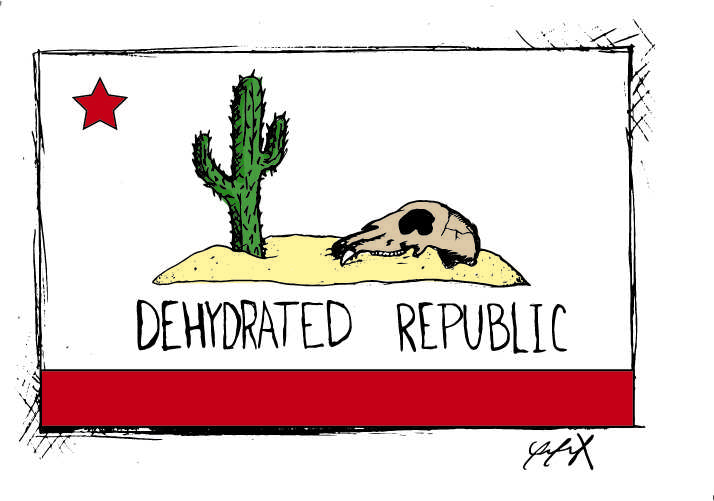Most Californians are aware of the drought. Most people don’t like their local water agency telling them how to use water on their property. Yet most people in Santa Rosa probably weren’t aware in August of 2014 that the city implemented mandatory water restrictions.
Maybe you have noticed that your restaurant server doesn’t bring glasses of water as you sit down. Water upon request at restaurants, among other restrictions like limiting the window of time for crop irrigation, makes up stage one of Santa Rosa’s Urban Water Shortage Contingency plan. California requires all water agencies serving a certain number of customers to adopt a shortage plan to respond to a drought and provide guidelines for reduction strategies. The goal of stage one is to decrease consumption by 20 percent, which complies with Governor Jerry Brown’s call in July to reduce water usage statewide.
According to www.savingwaterpartnership.org, the Sonoma-Marin Water Saving Partnership’s website, all water agencies in the partnership are on track to meet the goal.
None of stage one’s restrictions affect water rates for residential customers, but stage two does. Stage two would limit single and multi family households to 58 gallons per capita day and a landscape allotment, and would limit commercial, industrial and governmental costumers to 85 percent of the water they used the previous year. It also adds a 10 percent water usage charge to residential costumers’ current usage charge. You would be aware if we entered stage two. And stages three and four only increase the water usage charge and add an excess use charge for water sold above the consumption limits.
Santa Rosans may be on track, and we may be sitting snuggly in stage one, but Mother Nature is not letting up on California—January 2015 was the driest month on record. February was the hottest.
Researchers at Stanford University concluded that a combination of hot, dry weather is twice as likely to produce a severe drought than cool, dry weather; and that consecutive hot years increase the likelihood of multi-year droughts in the future. California’s drought has lasted four years. 2014 was not only one of the driest years on record; it was the hottest year in California history.
We need to keep conserving—if anything just to avoid stage two’s restrictions and a rise in the water bill. The only way to avoid stage two is to take on the personal responsibility of reducing our water usage. Don’t make the water agency force you to do it.
In America the largest category of residential water use is landscape irrigation—i.e. your lawn. The Environmental Protection Agency estimates, “As much as 50 percent of water we use outdoors is wasted from inefficient watering methods and systems.” One of the best ways to reduce water use is to get rid of that furry green sponge in front of your house. Find drought resistant plants and some cool rocks to replace that thirsty lawn.
Santa Rosa Junior College replaced six-acres of grass with artificial turf made of recycled materials on the Santa Rosa campus, reducing water usage on our main campus by about 20 percent. Also, SRJC uses a central control irrigation system that accounts for rainfall to operate watering on its three campuses and saves an estimated 20 to 40 percent in water usage.
Even if your just renting a room and only staying at SRJC for two years, you can still do your part by washing only full loads of laundry, taking shorter showers and never leaving the faucet running while you brush your teeth or shave. With no end to the drought in sight, everyone has to start thinking about how they can help conserve.


